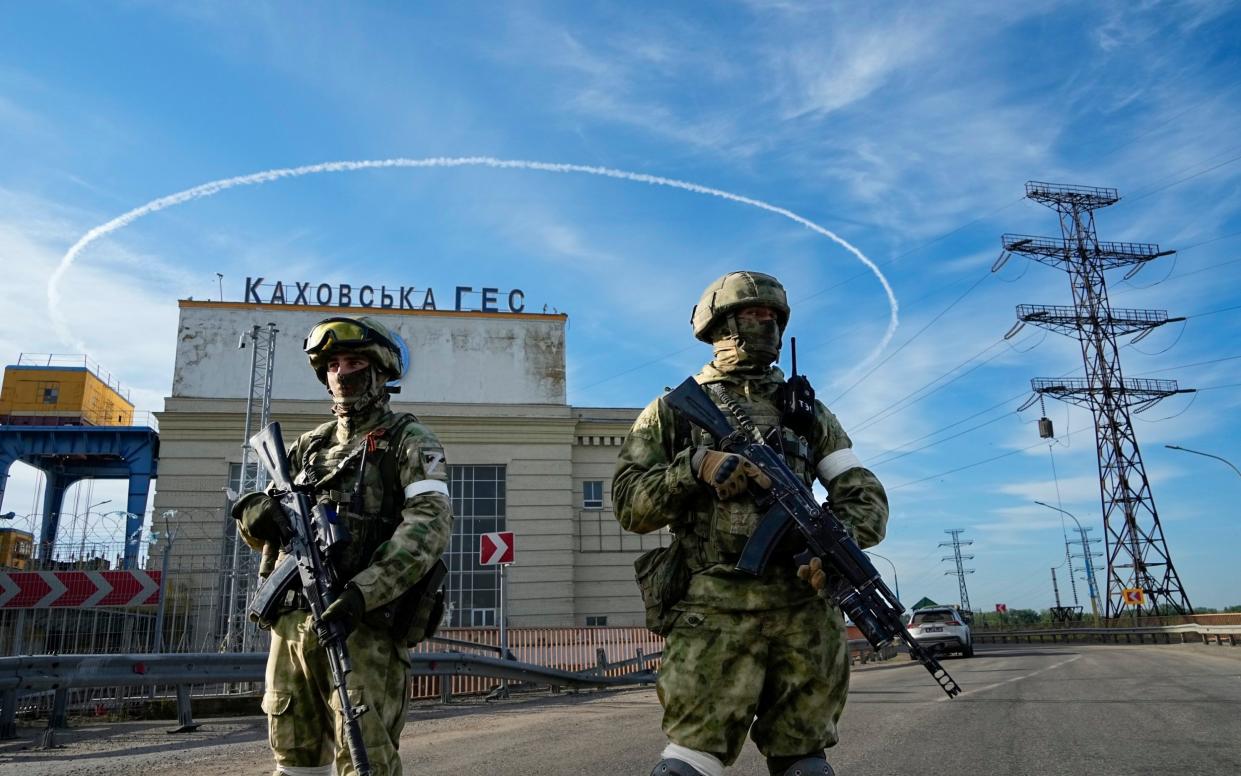Russia leaves 20,000 soldiers stranded in tactical withdrawal to the east

Russia has begun withdrawing troops across a key river to escape a Ukrainian counter offensive, Ukrainian officials claimed yesterday.
Vitaly Kim, the governor of Mykolayiv district, said the entire Russian command staff was retreating from the west bank of the Dnipro river that flows through the occupied city of Kherson in the south east.
If confirmed, that would leave an estimated 20,000 or more Russian soldiers isolated from their commanders and cut off from supply lines by the half-mile-wide river, over which the main bridges in the Kherson region have been damaged by Ukrainian attacks.
“I feel just a bit sorry - but not much - for the stupid orcs who had been abandoned on the right bank of the Dnipro,” Mr Kim said in a message posted to the Telegram social media app, using his favoured derogatory term for Russian soldiers.
“All of the commanders are moving to the other side.”
Early in Vladimir Putin’s invasion of Ukraine, Russian forces surged north from the annexed Crimean Peninsula and quickly seized territory to connect with separatist enclaves in eastern Ukraine. They also advanced westwards, hoping to link up with pro-Russian separatists in Moldova, creating a landbridge that would entirely cut off Ukraine from the Black Sea.
While Russian forces seized Kherson, the only regional capital to have fallen in the invasion, their advance halted east of Mykolaiv, leaving a vulnerable pocket of Russian-controlled territory sandwiched between frontlines, the wide Dnipro River to the east and the Black Sea to the south.
Since then Ukrainian forces have repeatedly targeted the bridges across which nearly all Russian resupplies must pass.
Video of explosions shared online on Sunday suggested the Antonovksy bridge in Kherson’s suburbs had been targeted again on Saturday night, while Ukrainian forces reported striking another bridge on the Kakhovka Hydroelectric Power Plant dam again on Saturday, reportedly rendering it impassable for heavy vehicles.
On Saturday, the British Ministry of Defence (MoD) said that the two main road bridges to the Russian-controlled pocket “are now probably out of use for the purposes of substantial military resupply”.
Regional official Sergiy Khlan told Ukrainian television that the only way for Russian soldiers to cross the river were pontoons near the Antonovsky bridge that “cannot totally meet their needs”.
Russia was moving its command centres to the left bank of the river knowing that they would struggle to evacuate them if fighting escalated, he added.
While the bridges remain passable on foot, their inability to handle heavy traffic could spell eventual defeat for Russian troops west of the Dnipro, according to the Institute for the Study of War.
“Russian forces on the west bank of the Dnipro will likely lose the ability to defend themselves against even limited Ukrainian counterattacks,” it said in an analysis.
“Bringing ammunition, fuel, and heavy equipment sufficient for offensive or even large-scale defensive operations across pontoon ferries or by air is impractical if not impossible.”
In a bid to relieve pressure, Russian forces may be increasing attacks northeast in the Donbas region in a bid to divert the attention of Ukrainian forces preparing a major counteroffensive in southern Ukraine.
Russia’s priority over the past week has likely been to reorient units to strengthen its campaign in southern Ukraine, the MoD said on Sunday.
Russian-backed forces of the self-proclaimed Donetsk People’s Republic in the Donbas continued to attempt assaults to the north of Donetsk city, according to the intelligence update.
Ukraine’s military command on Saturday said “fierce fighting” continued in Pisky, an eastern village which Russia had earlier said it had full control over.
Meanwhile, Volodymyr Zelensky, Ukraine’s president, warned that Russian soldiers who shoot at Europe’s largest nuclear power station or use it as a base to shoot from will become a “special target” for Ukrainian forces.
Russian troops captured the Zaporizhzhia nuclear facility in southern Ukraine early in the war, but it is still being run by Ukrainian technicians.
Amid fears of a nuclear catastrophe over renewed shelling there over the past days, United Nations Secretary-General Antonio Guterres has called for the establishment of a demilitarised zone. Ukraine and Russia blame each other for the shelling.
“Every Russian soldier who either shoots at the plant or shoots using the plant as cover, must understand that he becomes a special target for our intelligence agents, for our special services, for our army,” Mr Zelensky said in his nightly address on Saturday.

 Yahoo News
Yahoo News 
